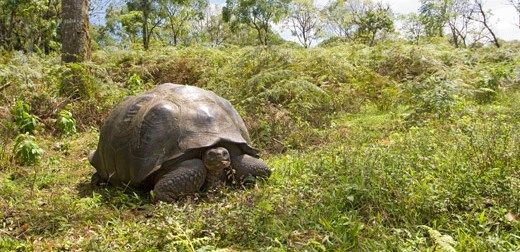Galapagos biosecurity – protection of unique UNESCO world heritage site

Background
The Galapagos Islands are of immense cultural and scientific value, founded on the studies carried out by Charles Darwin of the plants and animals of the islands, which led to the publication of the “Voyage of the Beagle” in 1839 and “On the Origin of Species” in 1859. Darwin’s theories of evolution still underpin evolutionary biology today.
The islands provide many examples of how ecological, evolutionary and biogeographic processes operate together to influence how species form and adapt to their environments. The Galapagos are home to many iconic land species, including Darwin’s finches, mockingbirds, land snails and giant tortoises. In addition, the Galapagos Marine Reserve also has many unique species, including the red-footed booby, marine iguanas and sea lions. The unique features lead to the Galapagos being classified as an UNESCO World Heritage site.
The challenge
The Galapagos Islands have immense value to society for their biodiversity, and drive a large part of the Ecuadorian tourist industry. This means hundreds of thousands of visitors now travel to the islands every year, driving increased economic activity and growth of the local population. In order to preserve the unique character of these islands from the pressures population growth and increased connectedness with the continent brings, it is essential to prevent the introduction of foreign species and diseases by putting in place appropriate science-based biosecurity protection measures.
The solution
Dr Simon Goodman, together with colleagues from the Zoological Society of London and Ecuador, carried out research to identify the most likely routes for introduction of mosquitos, which carry viral diseases such as West Nile Virus. The team developed a risk analysis framework to assess pathways for the potential introduction of the mosquito transmitted virus to the islands. The research showed that airline travel for tourism was the primary route through which mosquitoes could introduce the virus, and recommended a suite of measures to reduce the chance of the virus arriving via this route.
The impact
Following the identification of the potential threat from the team’s research, Galapagos stakeholders began lobbying the Ecuadorian government and airlines to implement the teams’ recommendations in government policy and legislation. This led to new national legislation on biosecurity and the introduction of new control measures, including disinsection treatments on all aircraft flying to Galapagos, bans on direct international flights to Galapagos and restrictions on the point of origin for all flights.
Ecuador’s three major airlines changed their practice as a result of this (e.g. the adoption of a World Health Organisation approved disinsection treatment) and also compliance and monitoring procedures were established. The teams’ work also contributed to the adoption of ‘insect zappers’ on tourist boats to reduce accidental transport of insects between islands, and improved personnel capacity and infrastructure for biosecurity in the islands.
An emergency response plan for the West Nile Virus, developed by the team, was adopted as the official response procedure, influencing the practice of all Galapagos management institutions and potentially the whole population in the event of the virus being detected.

